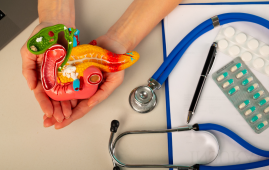

Recent research from Brigham and Women’s Hospital has unveiled how intestinal infections can significantly alter bile composition, influencing gut immunity and microbiota. Published in *Nature Microbiology* (2024), the study underscores bile’s dynamic role in host defense, adding a new dimension to our understanding of liver and intestinal interplay during infections.
Bile, a liver-produced solution essential for fat digestion, also serves as a communication medium between the liver and gut. Traditionally studied for its role in nutrient absorption, bile’s composition and its functional changes during infections have been less explored. This study sheds light on how enteric infections—broadly referring to infections affecting the intestine—induce specific changes in bile, aiding the gut in clearing pathogens.
Using a mouse model, the researchers analyzed bile metabolite alterations during infections with two pathogens: *Listeria monocytogenes*, which spreads to the intestine, liver, and gallbladder, and *Citrobacter rodentium*, which primarily infects the cecum and colon. Advanced metabolic profiling revealed hundreds of bile metabolites, including novel ones, that shifted dynamically in response to infection. These changes were both pathogen-specific and shared, highlighting bile’s role as a critical component of intestinal defense mechanisms.
Dr. Matthew Waldor, MD, PhD, from the hospital’s Division of Infectious Diseases, commented:
Our findings reveal the intricate and adaptive nature of bile composition, emphasizing the liver’s essential role in defending the gut. This opens new avenues for understanding how the liver regulates immune responses and maintains physiological stability during infections.
The study also identified 812 bile metabolites, though researchers believe this is just the beginning. With advances in tandem mass spectrometry, the discovery of additional metabolites and their specific roles in immune function is anticipated.
These findings enhance our knowledge of the liver-gut axis and its impact on infection clearance. While conducted in mice, the results hold promise for translating to human health, offering potential insights into therapeutic strategies for managing intestinal infections and related disorders.
This research not only broadens the understanding of bile’s metabolic complexity but also highlights its critical involvement in immune modulation, paving the way for future studies on liver and gut health in the context of infectious diseases.
More information: Ting Zhang et al, Enteric bacterial infection stimulates remodelling of bile metabolites to promote intestinal homeostasis, Nature Microbiology (2024). DOI: 10.1038/s41564-024-01862-z
more recommended stories
 36-Week Pre-eclampsia Screening May Reduce Term Risk
36-Week Pre-eclampsia Screening May Reduce Term RiskA New Preventive Strategy for Term.
 Cardiovascular Risk and Sudden Cardiac Death in Diabetes
Cardiovascular Risk and Sudden Cardiac Death in DiabetesRising Sudden Cardiac Death (SCD) Risk.
 Poor Kidney Function and Alzheimer’s Biomarkers Explained
Poor Kidney Function and Alzheimer’s Biomarkers ExplainedPoor kidney function may influence levels.
 Walking Speed Before Hip Replacement Predicts Recovery
Walking Speed Before Hip Replacement Predicts RecoveryNew Evidence Points to a Simple,.
 Neuroblastoma Drug Combo Extends Survival in Models
Neuroblastoma Drug Combo Extends Survival in ModelsA Promising Shift in High-Risk Neuroblastoma.
 How Soybean Oil Impacts Weight Gain and Metabolism
How Soybean Oil Impacts Weight Gain and MetabolismWhy Soybean Oil May Affect Metabolism.
 Coffee and Cognitive Function: Evidence Review
Coffee and Cognitive Function: Evidence ReviewA new narrative review in Cureus.
 Colorectal Cancer Screening Rates Low in Adults 45–49
Colorectal Cancer Screening Rates Low in Adults 45–49Recent UCLA research reveals that colorectal.
 Gut Immune Cells and Long-Lasting Antiviral Protection.
Gut Immune Cells and Long-Lasting Antiviral Protection.Breakthrough Findings on How Gut Immune.
 Mild Pancreatic Duct Dilatation Signals Higher Cancer Risk
Mild Pancreatic Duct Dilatation Signals Higher Cancer RiskEarly Structural Changes Offer Critical Clues.

Leave a Comment